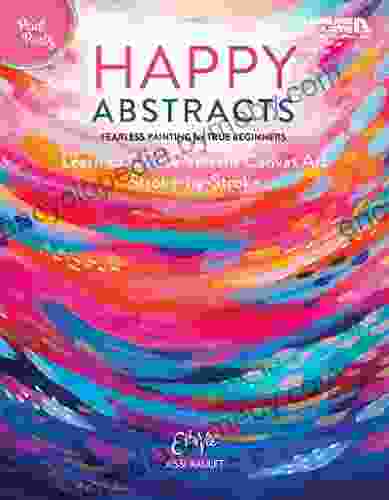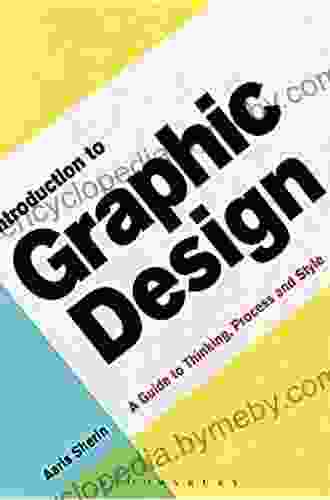Unlock Your Creative Potential: An Introduction to Graphic Design

Graphic design is an art form that combines creativity and technology to communicate messages visually. It is a crucial tool in today's world, where visual communication dominates. From marketing and branding to packaging and web design, graphic design has become an indispensable part of our daily lives. 4.7 out of 5 Whether you are a budding designer, an aspiring entrepreneur, or simply someone who wants to enhance their communication skills, this to graphic design will provide you with a solid foundation in the principles and practices of this captivating field. Graphic design is guided by a set of principles that ensure effective and visually appealing designs. These principles include: Typography is a fundamental element of graphic design. It involves the selection, arrangement, and styling of text to create effective and visually appealing communication. Understanding typography allows you to: Typography includes various aspects, such as: Color theory is the study of how colors interact and affect human perception. Understanding color theory enables you to: Color theory involves various concepts, such as: Layout and composition are crucial aspects of graphic design, determining the placement and organization of visual elements. By mastering layout and composition, you can: Layout and composition involve techniques such as: Graphic design software is an essential tool for modern designers. These software programs provide advanced features and capabilities that enable you to: Popular graphic design software includes: Graphic design is a creative process that involves: Throughout the creative process, it is important to: Graphic design offers a wide range of career opportunities, including: Welcome to the World of Graphic Design
Language : English File size : 201230 KB Text-to-Speech : Enabled Screen Reader : Supported Enhanced typesetting : Enabled Print length : 648 pages The Pillars of Graphic Design
The Power of Type
The Language of Colors
Arranging Visual Elements
Digital Tools for Graphic Designers
The Design Workflow
A World of Opportunities
4.7 out of 5
| Language | : | English |
| File size | : | 201230 KB |
| Text-to-Speech | : | Enabled |
| Screen Reader | : | Supported |
| Enhanced typesetting | : | Enabled |
| Print length | : | 648 pages |
Do you want to contribute by writing guest posts on this blog?
Please contact us and send us a resume of previous articles that you have written.
 Book
Book Novel
Novel Page
Page Chapter
Chapter Text
Text Story
Story Genre
Genre Reader
Reader Library
Library Paperback
Paperback E-book
E-book Magazine
Magazine Newspaper
Newspaper Paragraph
Paragraph Sentence
Sentence Bookmark
Bookmark Shelf
Shelf Glossary
Glossary Bibliography
Bibliography Foreword
Foreword Preface
Preface Synopsis
Synopsis Annotation
Annotation Footnote
Footnote Manuscript
Manuscript Scroll
Scroll Codex
Codex Tome
Tome Bestseller
Bestseller Classics
Classics Library card
Library card Narrative
Narrative Biography
Biography Autobiography
Autobiography Memoir
Memoir Reference
Reference Encyclopedia
Encyclopedia Martha Sears
Martha Sears G Reen
G Reen Amanda Bjerkan Hennessy
Amanda Bjerkan Hennessy Creative Task
Creative Task William Poundstone
William Poundstone 2005th Edition Kindle Edition
2005th Edition Kindle Edition Barbara Binder Kadden
Barbara Binder Kadden Peter Brown Hoffmeister
Peter Brown Hoffmeister Linda Peters
Linda Peters Aaron Jackson
Aaron Jackson Pam Laricchia
Pam Laricchia Abby Denson
Abby Denson 006 Edition Kindle Edition
006 Edition Kindle Edition Doug Fletcher
Doug Fletcher S H Marpel
S H Marpel Debbie Macomber
Debbie Macomber Aaron Reynolds
Aaron Reynolds Paul Jackson
Paul Jackson Hannah Pryor
Hannah Pryor Jeff Wheeler
Jeff Wheeler
Light bulbAdvertise smarter! Our strategic ad space ensures maximum exposure. Reserve your spot today!

 Vincent MitchellUnlock the Magic of Transactional Analysis with "Three Pearls Fairy World"
Vincent MitchellUnlock the Magic of Transactional Analysis with "Three Pearls Fairy World" Cody RussellFollow ·17.2k
Cody RussellFollow ·17.2k Rod WardFollow ·4.4k
Rod WardFollow ·4.4k Angelo WardFollow ·9.3k
Angelo WardFollow ·9.3k Josh CarterFollow ·2.2k
Josh CarterFollow ·2.2k John GreenFollow ·15.6k
John GreenFollow ·15.6k Brennan BlairFollow ·4.4k
Brennan BlairFollow ·4.4k Evan HayesFollow ·10.3k
Evan HayesFollow ·10.3k Brady MitchellFollow ·14.5k
Brady MitchellFollow ·14.5k

 Timothy Ward
Timothy WardFearless Painting for True Beginners: Learn to Create...
Unlock the Joy of...

 Fernando Pessoa
Fernando PessoaProven 12-Step Program for Financial Peace of Mind:...
Are you struggling with...

 Chinua Achebe
Chinua AchebeLayers Colors Desire: Layers Colors Thoughts Mystery
A Literary Labyrinth...

 Fernando Bell
Fernando BellUnearth Hidden Treasures: Journey Through "Secondhand...
Prepare to embark on an extraordinary...

 Caleb Carter
Caleb CarterSymbolic Messages Garage Sale Mysteries: Unveiling the...
Welcome to the extraordinary world of the...

 Nikolai Gogol
Nikolai GogolTravels in the Billion Dollar Trash Trade: Uncovering the...
Ỡ In his...
4.7 out of 5
| Language | : | English |
| File size | : | 201230 KB |
| Text-to-Speech | : | Enabled |
| Screen Reader | : | Supported |
| Enhanced typesetting | : | Enabled |
| Print length | : | 648 pages |










